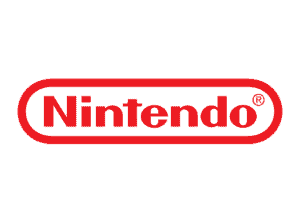Throughout history, people have faced and overcome obstacles. The tenacity, innovation, and dedication of humankind have seen our species continue to flourish despite adversity. The same is true for businesses, as well. From economic crises to changing technology, businesses have discovered ways to continue to flourish throughout history. Today, we’ll look at four major businesses that grew during challenging times.
 Procter & Gamble
Procter & Gamble
To this day, Procter & Gamble is one of the biggest companies in the world, specializing in personal & healthcare products. Founded in 1837, P&G has faced down some of the most complicated and devastating global incidents but has continued to grow. During The Great Depression, many people were struggling to make ends meet, and in turn, were shopping less. The heads of Proctor & Gamble realized that even during The Depression, people would still need personal health products, such as soap. Pivoting their focus to personal care products, P&G began target marketing housewives via radio advertisements. Eventually, P&G began sponsoring commercial radio programs, and in 1933, launched its first radio serial called Oxydol’s Own Ma Perkins. It was a hit with housewives, and Proctor & Gamble gave birth to what would be called “soap operas.” By 1939, P&G produced 21 different programs to support its other brands, and in 1950, their first television soap opera (The First Hundred Years) was aired.
Barnes & Noble
Barnes & Noble is one of the oldest bookstores in America, with over 600 bookstores in the United States alone. First opening in 1886, Barnes & Noble has withstood wars, The Great Depression, and more. In the 1990s and early 2000s, consumers began to shift away from buying products from physical stores, leading to the bankruptcies and closures of many large bookstore chains. Barnes & Noble thrived during this shift by purchasing smaller chains and offering the sale of books through mail-order catalogs. Barnes & Noble managed to pivot successfully during a very trying period for many retailers, during the beginning of the technology boom. It began selling books online through an early videotex service called Trintex, which was part of the now-defunct Prodigy internet service provider in the mid-90s. By 1997, a primitive version of the Barnes & Noble website was created, and in 1999, barnesandnoble.com went public. Being able to bring their products online, in addition to still having retail stores, allowed Barnes & Noble to keep up with online mega-retailers such as Amazon while still catering to those who didn’t have internet access.
 HubSpot
HubSpot
HubSpot is an all-in-one customer relationship management tool (CRM). It is hosted in an online cloud, making it accessible anywhere with an internet connection. HubSpot is a marketing, sales, and service platform that focuses on inbound methodology rather than outbound marketing, and is widely popular with businesses across industries. Created in 2006, HubSpot found itself smack in the middle of the 2008 economic crisis while still starting out. People were losing their jobs around the country, and HubSpot quickly realized that there was an untapped pool of talent to be found. HubSpot recruiters reached out to experienced salespeople who lost their jobs, many of which were just in the wrong division at the wrong time, and brought them aboard their budding company. Working to bring the best tools and services available and backed by a skilled sales team, HubSpot managed to flourish during the financial crisis by pivoting to accommodate the weak economy. Today, it is a multi-million dollar enterprise and still going strong.
Nintendo
Nintendo was founded in 1889 in Kyoto, Japan, and has overcome many obstacles in its long & storied history. Originally the manufacturer of handcrafted playing cards, it’s meager beginnings are a far cry from what people normally think of when they hear the word “Nintendo”. Despite facing world wars, economic crashes, lack of interest, and poor niche markets, Nintendo continued to tread on, pivot, and succeed. One of the most integral times for Nintendo happened in the late 1960s when their market was failing. Adults were losing interest in playing card games, and children’s playing cards were losing the company capital. After reallocating resources, onboarding specialists in electronics, and taking a calculated risk, Nintendo released the first electronic toy in Japan in 1970: the Nintendo Beam Gun.
Nintendo Pivots into Video Games
The booming success of the Beam Gun led to Nintendo releasing more electronic toys, leading to a watershed in the early 70s. Nintendo eventually moved into the video game market due to the 1973 oil crisis. Since petroleum is a major ingredient in manufacturing plastic, the oil crisis led to their toys becoming more expensive to produce. By moving into creating consoles for home and arcade use, Nintendo was able to cut back on resources required for production, keeping them afloat. In 1979, Nintendo opened its first office in the United States, and in 1980, the first handheld video game console, the Game & Watch, was released. The 1983 video game crash, caused by oversaturation in the market, threatened Nintendo greatly, but the company managed to overcome the impact of the crash by clever marketing. Nintendo rebranded its video game consoles as “entertainment systems” that played “game paks,” a euphemism for video game cartridges. They also implemented a lockout chip that kept bootlegged or third-party cartridges from being playable on the Famicon Entertainment System (known in America as the Nintendo Entertainment System, or NES). By the end of the 1980s, Nintendo became the video game juggernaut we know it as today, bringing in $5.59 billion revenue in 2019.
The key to success during times of trouble is to know when to pivot. Things change across industries during crises. Keeping up with current trends, reallocating resources, and charting a new path can help keep businesses going.



